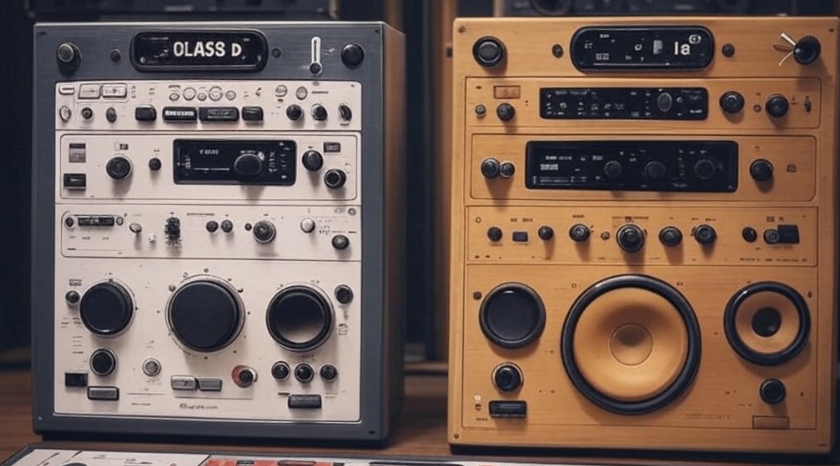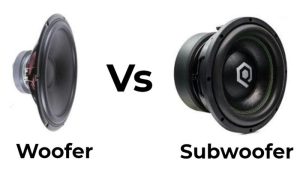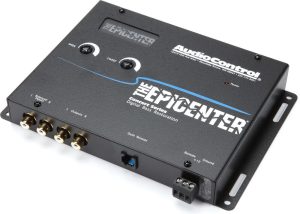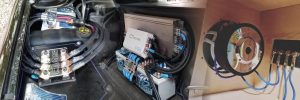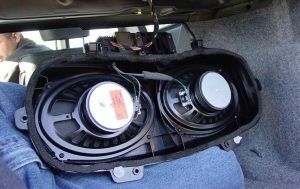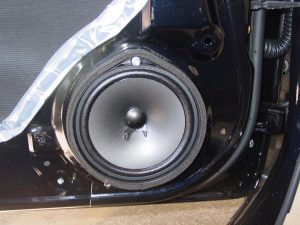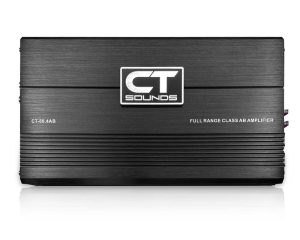Class D vs. Class A/B Amplifiers: A Deep Dive into Audio Technology
When it comes to audio amplification, choosing the right amplifier class can make or break your listening experience. Two of the most popular amplifier types today are Class D and Class A/B. Whether you’re an audiophile building a high-end home theater system or a casual listener upgrading your car audio, understanding the differences between these amplifier classes is crucial. Class D amplifiers are known for their efficiency and compact size, while Class A/B amplifiers have a reputation for delivering superior sound quality with a classic design. In this blog post, we’ll explore the technical details, performance characteristics, advantages, and drawbacks of Class D versus Class A/B amplifiers to help you decide which is best for your needs.
What Are Amplifier Classes?
Before diving into the specifics of Class D and Class A/B amplifiers, it’s worth understanding what amplifier “classes” mean. Amplifier classes refer to the design and operational characteristics of an amplifier’s circuitry, particularly how it processes and amplifies an audio signal. These classes—ranging from A, B, and A/B to D and beyond—determine factors like efficiency, heat generation, and sound fidelity. Class A/B amplifiers combine elements of older Class A and Class B designs, while Class D represents a more modern, digital approach. Each class has its strengths and weaknesses, making them suited for different applications, from portable speakers to professional audio setups.
The classification system dates back decades, with Class A being the simplest and least efficient, while newer designs like Class D leverage advanced technology for better performance in specific areas. For most consumers, the choice often comes down to Class A/B versus Class D, as these two dominate the market today. By examining their core differences, we can better appreciate how they cater to diverse audio needs.
How Class A/B Amplifiers Work
Class A/B amplifiers are a hybrid of Class A and Class B designs, striking a balance between sound quality and efficiency. In a Class A amplifier, the output transistors conduct electricity continuously, even when there’s no audio signal, resulting in high fidelity but significant energy waste. Class B amplifiers, on the other hand, split the signal between two transistors, each handling half of the waveform, which improves efficiency but can introduce distortion at low volumes. Class A/B combines these approaches: the transistors operate in a “push-pull” configuration, staying active just enough to minimize distortion while reducing power loss compared to Class A.
This design makes Class A/B amplifiers a favorite among audiophiles who prioritize sound quality. They excel at reproducing audio with warmth and detail, especially in the midrange and high frequencies. However, they still generate more heat and require larger power supplies than their Class D counterparts, which can be a drawback in compact or energy-conscious setups. For traditional hi-fi systems or car audio installations where sound purity matters most, Class A/B remains a trusted choice.
How Class D Amplifiers Work
Class D amplifiers take a radically different approach, relying on digital switching technology rather than the linear operation of Class A/B. Instead of continuously amplifying the audio signal, Class D amplifiers use pulse-width modulation (PWM) or similar techniques to rapidly switch the output transistors on and off. This creates a high-frequency square wave that’s filtered to reconstruct the original audio signal. Because the transistors are either fully on or fully off—rather than operating in a partially conductive state—Class D amplifiers waste very little energy as heat, achieving efficiency ratings often exceeding 90%.
This digital design makes Class D amplifiers lightweight, compact, and ideal for modern applications like portable Bluetooth speakers, subwoofers, and even high-end home theater receivers. Critics once dismissed Class D for lacking the audio finesse of Class A/B, but advancements in filtering and component quality have narrowed the gap significantly. Today, Class D amplifiers can deliver impressive sound quality while keeping power consumption and heat generation to a minimum, making them a versatile option for a wide range of users.
Efficiency: Class D Takes the Lead
One of the most significant differences between Class D and Class A/B amplifiers is efficiency. Class A/B amplifiers typically achieve efficiency ratings of 50-70%, meaning a substantial portion of the input power is lost as heat rather than converted into sound. This inefficiency requires larger heat sinks and more robust power supplies, which can increase the size, weight, and cost of the amplifier. For applications where power draw isn’t a concern—like a stationary home audio system—this might not be a dealbreaker, but it’s less than ideal for portable or battery-powered devices.
Class D amplifiers, by contrast, shine in this department. With efficiency often exceeding 90%, they convert nearly all the input power into usable audio output. This makes them perfect for energy-conscious setups, such as solar-powered systems, car stereos, or wireless speakers that rely on battery life. The reduced heat output also means smaller heat sinks and less need for ventilation, allowing manufacturers to design sleeker, more compact products. If efficiency is your top priority, Class D is the clear winner.
Sound Quality: A Closer Look
Sound quality is where the debate between Class D and Class A/B amplifiers gets heated. Class A/B amplifiers have long been praised for their linearity and low distortion, particularly at lower volumes. Because they operate in a linear mode, they preserve the nuances of the audio signal, delivering a warm, natural sound that audiophiles adore. This makes them a go-to choice for critical listening environments, such as studio monitors or high-fidelity home stereo systems, where every detail in the music matters.
Class D amplifiers, historically, faced criticism for sounding “harsh” or “clinical” due to the high-frequency switching involved in their operation. Early designs struggled with distortion and noise introduced by imperfect filtering. However, modern Class D amplifiers have overcome many of these limitations thanks to improved components and sophisticated digital processing. High-end Class D models now rival Class A/B in clarity and depth, though some purists still argue they lack the same “musicality.” For most listeners, especially in casual or bass-heavy applications, the difference is negligible, but discerning ears might still lean toward Class A/B for pure audio bliss.
Size and Portability: Class D’s Compact Advantage
Size is another key factor distinguishing Class D from Class A/B amplifiers. Class A/B designs, with their larger transistors, heat sinks, and power supplies, tend to be bulkier and heavier. This isn’t a problem for stationary setups—like a living room hi-fi system—but it can be a limitation in space-constrained environments like car trunks or small apartments. The need for proper ventilation also complicates installation in tight quarters, making Class A/B less versatile for on-the-go audio solutions.
Class D amplifiers, thanks to their high efficiency and minimal heat output, can be incredibly compact. This makes them the preferred choice for portable speakers, headphones, and even slimline home theater systems. A Class D amplifier delivering hundreds of watts might fit in the palm of your hand, while a comparable Class A/B model could take up significantly more space. If portability or a minimalist design is important to you, Class D amplifiers offer a clear edge.
Heat Management: Less is More with Class D
Heat generation ties closely to efficiency and size, and it’s another area where Class D outperforms Class A/B. The linear operation of Class A/B amplifiers produces considerable heat, especially at high volumes or during prolonged use. This requires robust cooling systems—think large heat sinks or even fans—which can add to the cost and complexity of the setup. In poorly ventilated spaces, overheating can also degrade performance or shorten the amplifier’s lifespan.
Class D amplifiers, with their switching design, generate far less heat. The transistors spend most of their time in an off state, minimizing energy loss and keeping temperatures low. This not only simplifies cooling requirements but also enhances reliability, as components are less stressed by thermal wear. For applications where heat management is a concern—such as in-car audio or densely packed AV racks—Class D’s cool-running nature is a significant advantage.
Cost Considerations: Which Offers Better Value?
Cost is always a factor when choosing an amplifier, and both Class D and Class A/B have their pros and cons here. Class A/B amplifiers often come with a higher price tag due to their more complex circuitry, larger components, and additional cooling needs. High-end Class A/B models, designed for audiophile-grade performance, can cost hundreds or even thousands of dollars, reflecting their premium sound quality and build.
Class D amplifiers, meanwhile, benefit from simpler designs and smaller parts, which can lower manufacturing costs. Entry-level Class D amps are often more affordable than their Class A/B counterparts, making them accessible for budget-conscious buyers. However, top-tier Class D amplifiers—those with advanced filtering and premium components—can rival Class A/B in price. Ultimately, Class D tends to offer better value for casual users, while Class A/B justifies its cost for those who demand uncompromising audio fidelity.
Applications: Where Each Class Shines
The best amplifier class for you depends on your specific use case. Class A/B amplifiers excel in scenarios where sound quality trumps all else. Think high-end home stereos, professional recording studios, or vintage car audio systems where listeners want rich, detailed sound reproduction. Their ability to handle complex audio signals with minimal distortion makes them a staple in these environments, even if they sacrifice efficiency and compactness.
Class D amplifiers, on the other hand, dominate in modern, practical applications. They’re the go-to for portable Bluetooth speakers, subwoofers, and home theater receivers where space, power efficiency, and versatility matter. Their lightweight design and low power draw also make them ideal for automotive audio and battery-powered devices. If you need an amplifier that’s easy to integrate into a contemporary setup without compromising too much on sound, Class D is hard to beat.
The Verdict: Class D vs. Class A/B
So, which is better—Class D or Class A/B? The answer depends on your priorities. If you’re an audiophile chasing the purest sound possible and don’t mind the extra heat, size, and power demands, Class A/B amplifiers deliver a listening experience that’s hard to top. They’ve earned their place in traditional audio setups for a reason, offering a warmth and clarity that still resonates with purists. However, their inefficiencies and bulkiness can feel outdated in today’s fast-paced, energy-conscious world.
Class D amplifiers, with their unbeatable efficiency, compact size, and improving sound quality, represent the future of audio amplification. They’re perfect for anyone who values practicality without sacrificing performance, from casual listeners to tech-savvy enthusiasts. While they may not fully match Class A/B’s sonic finesse in every scenario, the gap is closing fast, and for most applications, Class D offers a compelling blend of features. Ultimately, your choice comes down to what you value most: tradition and audio purity with Class A/B, or innovation and efficiency with Class D.
Conclusion: Making the Right Choice for Your Audio Needs
Class D and Class A/B amplifiers each bring something unique to the table, catering to different audiences and use cases. By weighing factors like efficiency, sound quality, size, heat, cost, and application, you can determine which class aligns with your goals. Whether you opt for the time-tested excellence of Class A/B or the cutting-edge versatility of Class D, both promise to elevate your audio experience when chosen wisely. What’s your take—do you lean toward the classic warmth of Class A/B or the sleek efficiency of Class D? Let us know in the comments!
